Kusarigama: The Lethal Chain-Sickle That Defined Ninja Warriors
Imagine a weapon that’s part chain, part sickle, and all ninja. That’s the Kusarigama. In the world of the shadowy warriors, it’s not just a tool; it’s a symbol of stealth and precision. Let’s dive into the world of the Kusarigama and uncover its secrets.
What is the Kusarigama?
The kusarigama is a unique traditional Japanese weapon, combining a kama (sickle) with a kusari-fundo, a chain featuring a heavy iron weight. This weapon’s history dates back to the Muromachi period and is associated with the martial art of kusarigamajutsu.
One theory suggests that the kusarigama evolved from the jingama, a tool used to cut ropes during emergencies like fires. It could also be traced back to the konpi, a chain with a weighted end and a wrist attachment, used to protect horses from criminals. Another theory links it to the tobiguchi, an axe-like tool with a stout haft and a short, pick-like blade.
While there’s no evidence of mass battlefield use, the kusarigama found its place as a backup weapon during the Edo period. It excelled against sword-wielding opponents but had limitations against longer weapons like spears.
The kusarigama was not only a weapon but also a plaything and a means of attraction during festivals. It was taught in schools of kenjutsu, jūjutsu, and naginatajutsu as kusarigamajutsu, combining techniques from kama (sickle), kusari (chain), and fundo (weight).
There are three types of kusarigama. The first involves a sickle with a chain attached to its shaft, held in one hand while the chain and weight are held in the other. The second type has the chain attached at the base of the blade, offering more power and flexibility. The third type features a straight blade with a handguard, controlled with both hands.
Using the kusarigama typically entails swinging the weighted chain in a large circle over one’s head and then whipping it forward to immobilize an opponent’s weapon or limbs, allowing the wielder to rush in with the sickle.
Who Used the Kusarigama?
Ashigaru
Ashigaru were foot soldiers employed by samurai in feudal Japan, originating in the 14th century. They evolved from early samurai and farmers who became a significant military force during times of conflict. Armed with various weapons and evolving into skilled gunners with the introduction of firearms, ashigaru played a crucial role in Japanese warfare.
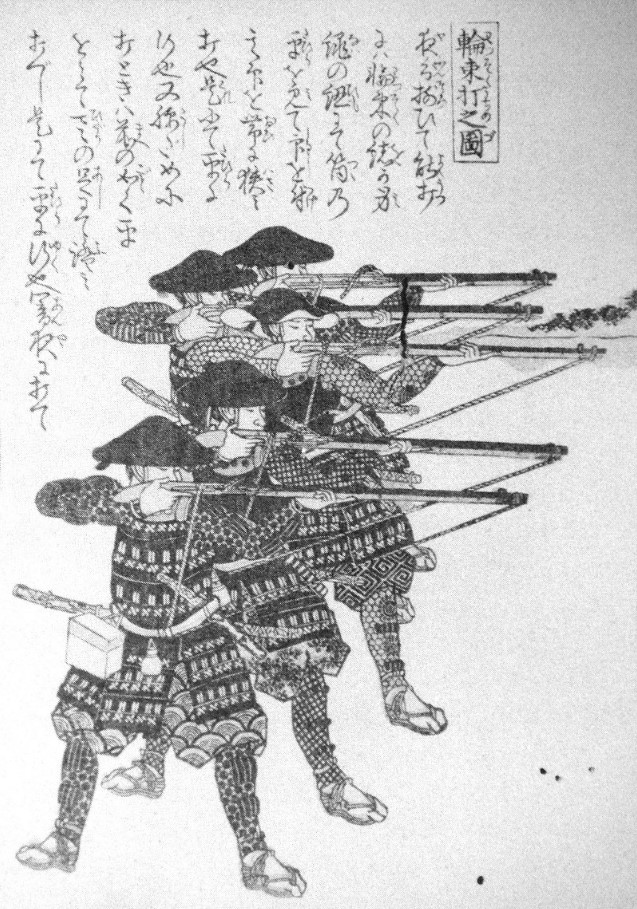
Edo Period Police
During Japan’s Edo period (1603–1868), samurai transformed into police, enforcing peace for over 250 years. They employed a multi-layered system, with high-ranking samurai as city administrators, yoriki overseeing patrols, and dōshin handling various duties.
Commoners, like komono, okappiki, and gōyokiki, also played roles. Their tasks ranged from investigating crimes and making arrests to interrogation and, when necessary, torture to obtain confessions. They carried a range of weapons and equipment for capturing criminals with the aim of taking them alive.
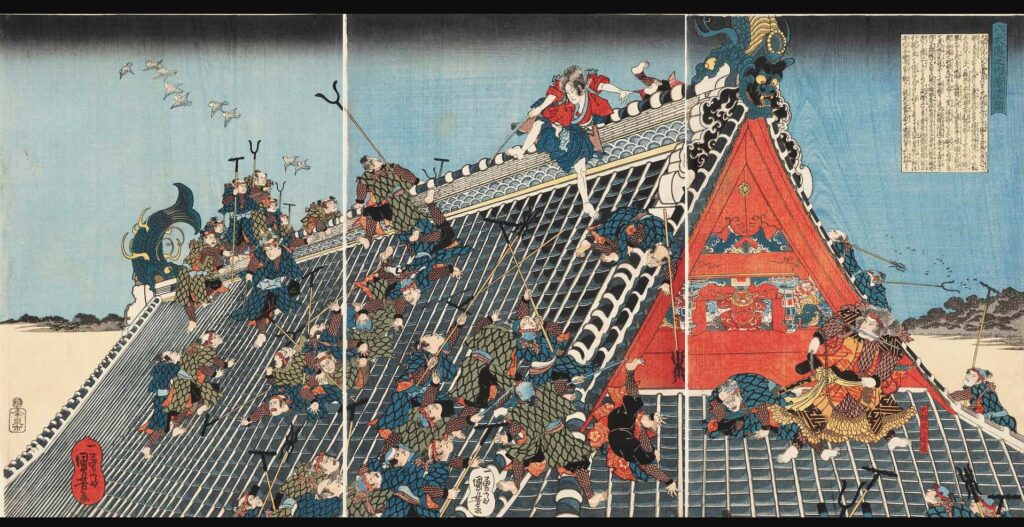
Kunoichi
During the Edo period in Japan, the term “kunoichi” primarily referred to women and didn’t carry the connotation of female ninjas. It wasn’t widely used, mainly because the writing style of that era didn’t resemble the strokes associated with “kunoichi.”
While the Bansenshukai, a 17th-century ninja handbook, mentioned a technique called “kunoichi-no-jutsu” for espionage using women, there’s debate among historians about the existence of female ninjas during that time.
Ninja
A ninja, also known as a shinobi, was a covert agent and warrior in feudal Japan skilled in various clandestine activities, including espionage, sabotage, and guerrilla warfare. They operated in secrecy and were often employed as spies and mercenaries, specializing in unconventional warfare tactics.
Ninja history dates back to the 15th century, but they may have existed earlier. These highly secretive operatives played significant roles during periods of unrest, adapting to the changing demands of their time. Ninjas were known for their stealth and martial arts skills, but much of their true history remains shrouded in mystery and legend.

Onna-musha
Onna-musha were female warriors in feudal Japan, trained in combat to protect their families and honor in times of war. They were part of the warrior class and had notable figures like Tomoe Gozen and Hangaku Gozen. They existed alongside male samurai and played vital roles in battles and conflicts, even forming combat units and leading troops.
However, their status diminished during the Edo period, and the last known records of onna-musha in battle date back to the Satsuma Rebellion in 1877, marking the end of the samurai era.
Ronin
Ronin were masterless samurai in feudal Japan who had no lord or clan affiliation. They became ronin upon their lord’s death or loss of favor. Some turned to other occupations, while others took up a life of wandering or even crime. The term “ronin” means “drifter” or “wanderer” in Japanese.
Samurai
Samurai were Japan’s hereditary military nobility from the late 12th century until the late 1870s. They served daimyo, possessed high status, and had unique privileges. Wearing two swords was mandatory for samurai on official duty, and they held the right to kill lower-class individuals in specific situations.
Emerging during the Kamakura shogunate, samurai became a powerful class, displaying martial prowess during conflicts, including repelling Mongol invasions. In the Edo period, they managed daimyo estates. By the late 19th century, the Meiji Restoration transitioned samurai into new roles as Japan modernized.
Shinsengumi
The Shinsengumi, formed in 1863 during Japan’s Bakumatsu period, was a skilled group of swordsmen commissioned to protect the shogunate’s representatives in Kyoto. Originally known as the Rōshigumi, they transitioned to the Shinsengumi under Matsudaira Katamori’s leadership.
Known for their strict code of conduct and role in maintaining order in Kyoto, they became renowned for their actions in events like the Ikedaya incident and the August 18 coup.
Sohei
Sōhei were warrior monks in Japan known for their role in various conflicts. They rose during the Tendai school’s influence, participated in temple disputes, and engaged in larger wars like the Genpei War.
The Ōnin War marked their shift to violence, and the rise of the Ikkō-ikki challenged samurai rule. Eventually, Oda Nobunaga and Tokugawa Ieyasu subdued them, leading to their decline.
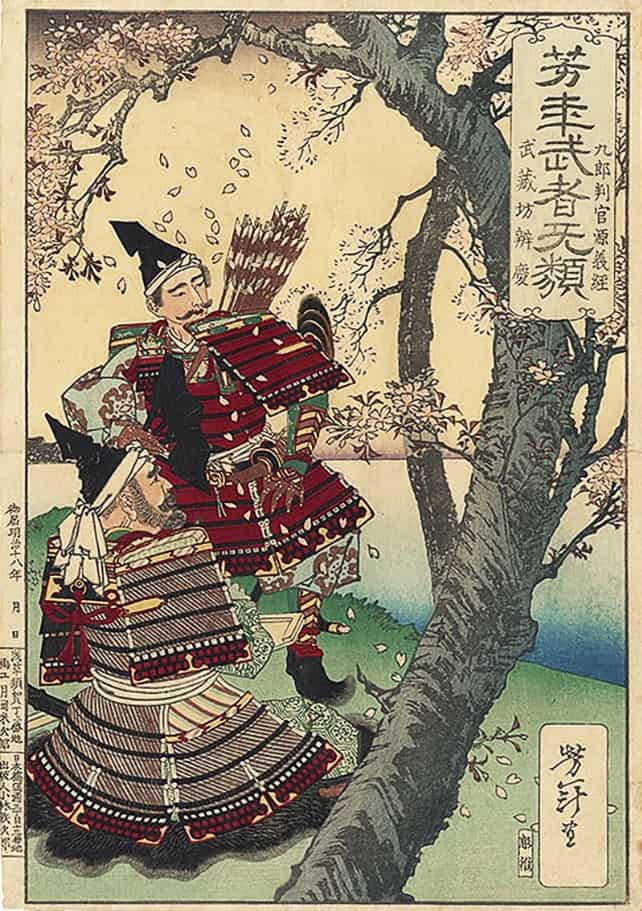
Yabusame
Yabusame is a traditional Japanese mounted archery, where archers on galloping horses shoot “turnip-headed” arrows at wooden targets. It originated during the Kamakura period as a form of practice organized by Minamoto no Yoritomo.
Yabusame is performed at various locations, including Tsurugaoka Hachiman-gū in Kamakura and Shimogamo Shrine in Kyoto. This ancient practice reflects Japan’s rich archery history and cultural traditions, emphasizing precision and honor.
Yamabushi
Yamabushi are Japanese mountain hermits, often associated with the shugendō religion, which combines elements of Buddhism, Shinto, and Taoism. They originated from ancient mountain-dwelling ascetics and holy individuals.

Yamabushi attire includes unique clothing and items like pom-pom adorned harnesses (yuigesa), straw sandals (kyahan), small front head adornments (tokin), metal rods (shakujō), backpacks (oi), and conch shells (horagai) used as horns.
Kusarigama in Pop Culture
Nioh
Nioh is an action game set in Japan during the late 16th century. Players control William, a warrior seeking Amrita, a powerful mystical stone. The game features historical figures, supernatural elements, and intense battles against yōkai. Edward Kelley, the antagonist, uses dark magic and alchemy. Players confront Kelley, uncover secrets, and face legendary creatures like Yamata no Orochi. “Nioh” combines history, mythology, and fantasy for a captivating gaming experience.
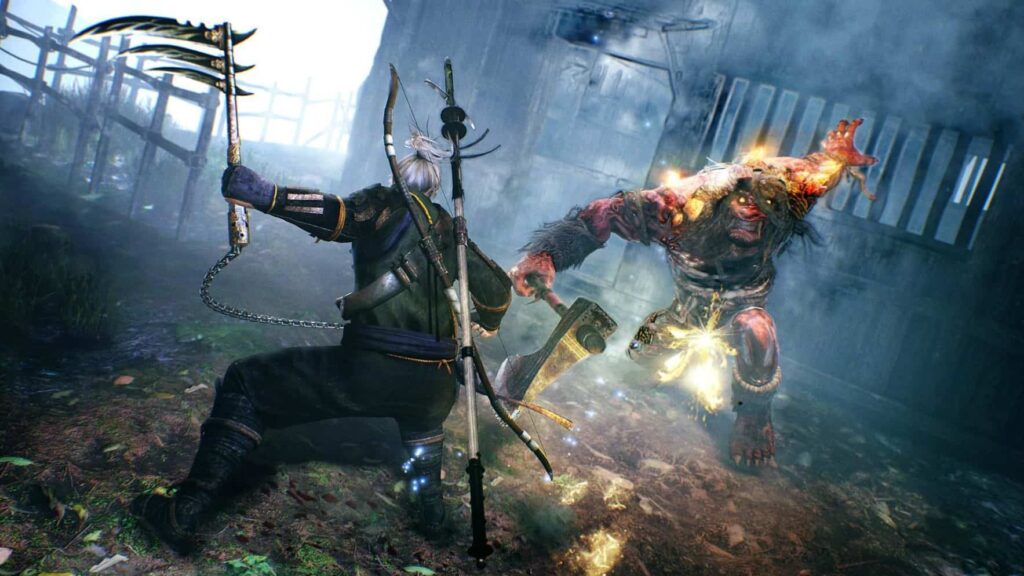
Ninja Gaiden
Ninja Gaiden draws inspiration from the 1980s NES series but reimagines the game world within the Dead or Alive universe. The game includes Japanese locales with Heian period influences and the fictional Vigoor Empire, blending various architectural styles, reflecting the creator’s commitment to creativity.

Earthquake – Samurai Shodown
Earthquake, a Texan warrior, trained alongside Galford under the same master, but they had a strained relationship. Despite his massive size, Earthquake is surprisingly agile and skilled in ninjutsu. He becomes a ruthless bandit leader, driven by greed and a desire for riches. His personality is defined by rudeness, selfishness, and a disregard for others. Earthquake’s immense weight stems from his failures in courting many ladies. He eventually ventures into the Makai, following promises of greater treasure, and is never heard from again.

Tenten – Naruto
Tenten is a determined kunoichi in Naruto with a dream to become legendary like Tsunade. She excels in fūinjutsu, a unique sealing technique-based fighting style. Tenten advocates for gender equality, is caring and compassionate, and values her teammates. Her appearance reflects Chinese culture, and her abilities as a weapon user and seal master make her a formidable ninja in Konoha.
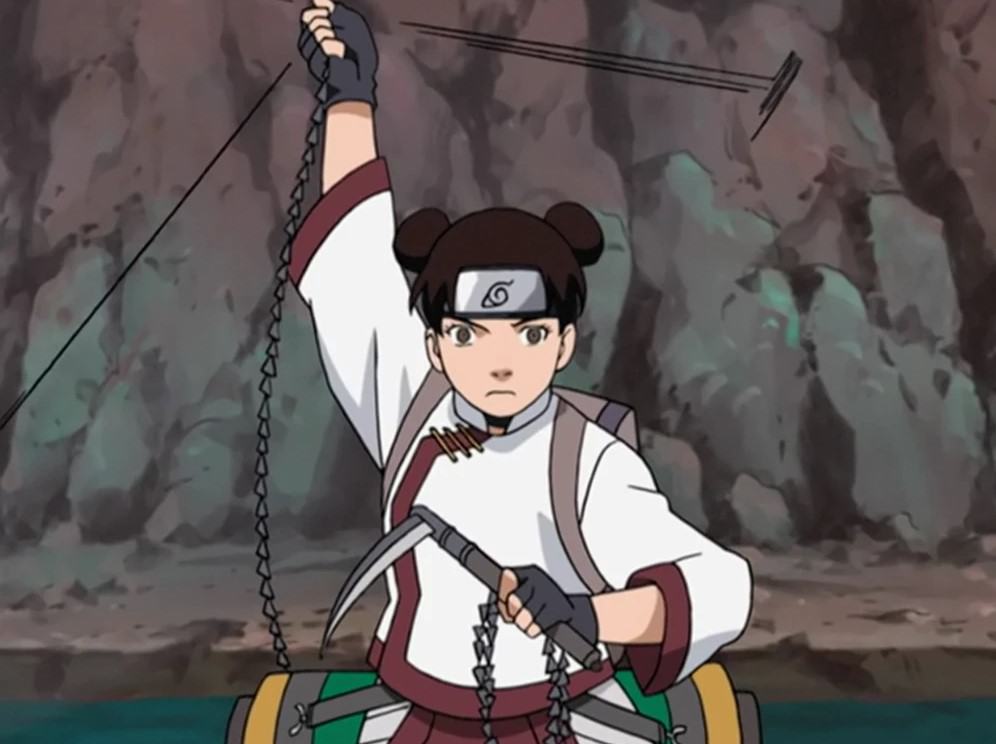
Black Star – Soul Eater
Black Star from Soul Eater is a teenage assassin known for his wild and energetic personality. He dreams of “transcending the gods” and mastering the Path of the Warrior. Black Star is recognized for his striking appearance with bright blue star-shaped hair and green eyes. He typically wears a sleeveless black shirt, white trousers, and distinctive star-themed accessories. Over time, his appearance matures, and he gains scars from battles, including one across his Star Clan tattoo. In a transformed state, influenced by the Lust chapter of the Book of Eibon, Black Star takes on a more feminine appearance.
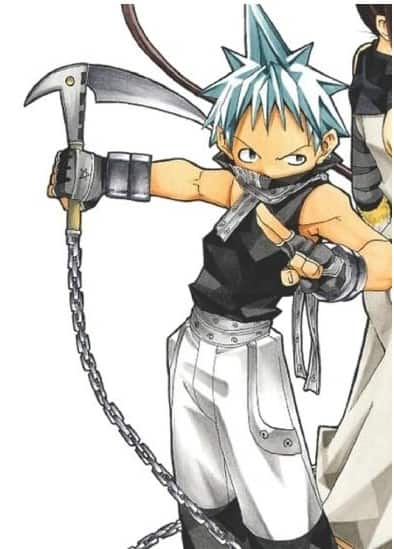
Hidan – Naruto
Hidan is a disturbing character in Naruto with a troubled past and a twisted sense of devotion to the cult-like faith of Jashin. He’s known for his foul-mouthed and sadistic personality, taking pleasure in causing pain to his enemies. Hidan has a unique appearance with grey hair, purple eyes, and wears the Akatsuki cloak. His character is marked by insanity, arrogance, and a strong belief in violence as a religious calling.

Hanzo the Salamander – Naruto
Hanzō the Salamander was a legendary figure in Naruto, known for his deadly venom and formidable skills. As a child, he was infused with a venomous salamander’s power, making him immune to toxins but forcing him to wear a mask to protect others from his venomous breath. Hanzō’s reputation was fearsome, and he once faced off against samurai from the Land of Iron, earning their respect. Despite his initial pursuit of peace, he later became obsessed with power, leading to tragic events, including the death of Yahiko, the leader of a group working for peace. Ultimately, he was defeated and killed by the Six Paths of Pain, marking the end of his reign.

Conclusion
From ancient legends to modern-day video games and manga, the Kusarigama remains a timeless emblem of ninja lore. Its unique blend of elegance and deadly power continues to captivate our imagination, much like the diverse types of Chinese swords that reflect centuries of martial tradition. Whether you’re a fan of history, gaming, or just a good old ninja tale, the Kusarigama has something intriguing to offer.
